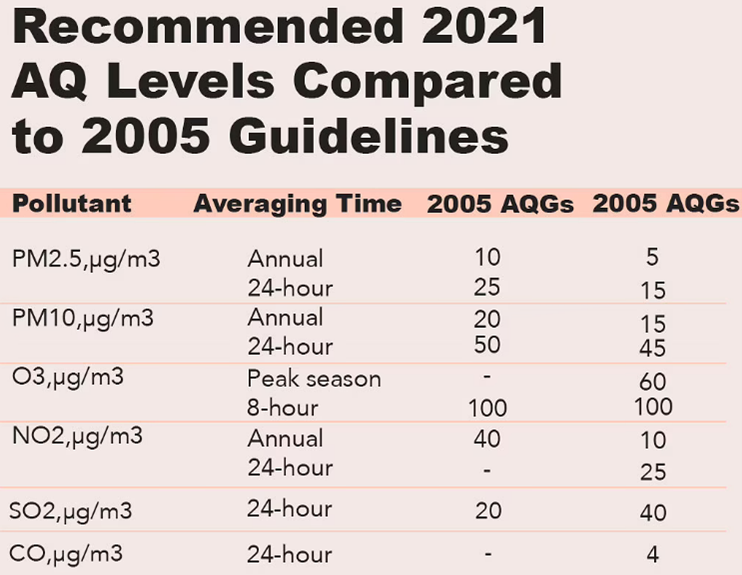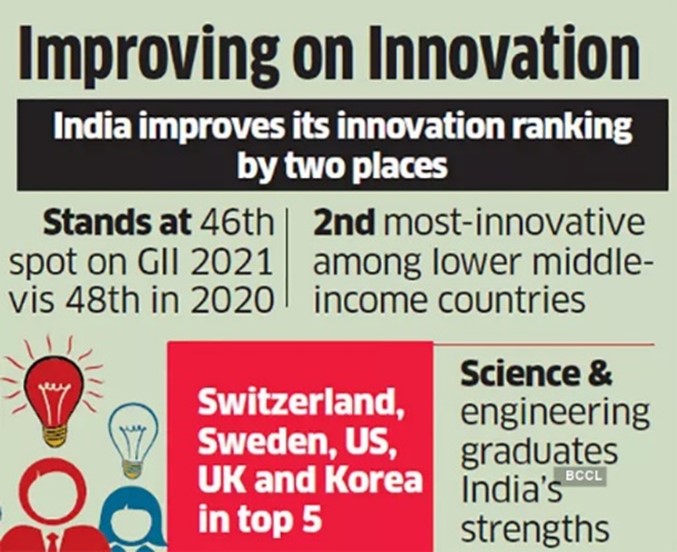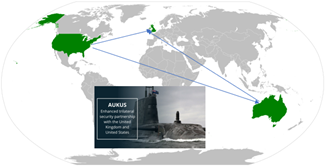Thursday, 16th September 2021
India’s UPI, Singapore’s PayNow to be linked: RBI
In News
Unified Payments Interface (UPI) and PayNow, the payment systems of India and Singapore respectively to be linked by July 2022.
About the News
- The Reserve Bank of India (RBI) and the Monetary Authority of Singapore (MAS) have announced a project to link their respective payment systems - Unified Payments Interface (UPI) and PayNow by July 2022.
- The linkage is for an interoperable remittance and trade network between the countries.
- It will create cross border interoperability in transactions through QR code and cards which will likely give a fillip to travel and remittance flows between the two countries.
Significance of the Move
- Ease of transfer: The linkage will make money transfers between the countries smoother without getting on-boarded on the other network.
- Boost Trade: The reduction in time and charges for cross-border payments will help boost trade between India and Singapore.
- Access to global markets: It will incentivize more retail investors to access global markets. Currently, the inter-bank charges which are over and above the Liberalized Remittance Scheme (LRS) discourages small investors from accessing global markets.
- Financial Inclusion: It closely aligns with the G20’s financial inclusion priorities of driving faster, cheaper and more transparent cross-border payments.
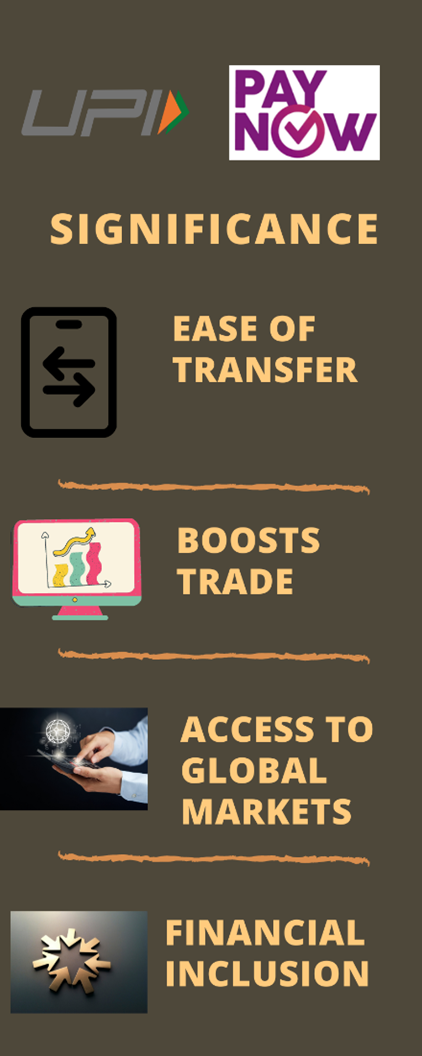
What are the UPI and PayNow systems?
- UPI: It is mobile based, fast payment system that facilitates customers to make round the clock payments instantly using a Virtual Payment Address (VPA) created by the customer.
- UPI supports both Person to Person (P2P) and Person to Merchant (P2M) payments and it enables a user to send or receive money.
- UPI was launched by NPCI in 2016 and it has emerged as one of the fastest growing payment systems in the world.
- PayNow: It is the fast payment system of Singapore which enables peer-to-peer funds transfer service, available to retail customers through participating banks and Non-Bank Financial Institutions (NFIs) in Singapore.
- It enables users to send and receive instant funds from one bank or e-wallet account to another in Singapore by using just their mobile number, Singapore NRIC/FIN, or VPA.
Sources:
Report on Indebtedness
In News
State Bank of India (SBI) has recently released a report on household indebtedness throwing light on deeper impact of COVID-19.
Findings of the report
- Increase in Indebtedness: Indebtedness of both rural and urban households has risen sharply. Average amount of debt increased by 84% and by 42% respectively for rural and urban households for the 6 year period ended 2018.
-
- Notably, lending rates have dropped sharply during the period with banks focusing on retail to grow their loan books during this period.
- COVID impact on households: The pandemic has resulted in a spike in household debt to GDP Household debt as a percentage of GDP has declined to 34% in Q1FY22 with the commensurate rise in GDP in Q1, though it has increased in absolute terms.
- The report projects household debt in rural and urban areas to double in 2021 from the 2018 levels. Debt to assets ratio of households deteriorated as well, indicating greater potential distress in servicing the debt.
- Rural Households: The state-wise trend indicates that the rural households’ average debt more than doubled in 18 states for the 6 year period ended 2018, while 7 states witnessed the same for urban households. Importantly, 5 states, including Maharashtra, Rajasthan and Assam witnessed a simultaneous doubling in average debt across both urban and rural households during this period.
- Formalization of rural economy: The share of outstanding cash debt from non-institutional credit agencies has declined significantly to 34% in 2018 from 44% in 2012.
- Notably, almost all states have registered a steep decline in non-institutional credit in rural areas, indicating the increase in formalisation of the economy.
- This could be explained by a significant increase in penetration of KCC cards.
- Cultivator household in rural India and self-employed household in urban India are reporting higher debt.
What is Household debt-to-total-assets ratio?
- Households’ total outstanding debt divided by their total assets.
- The total assets of households consist of both financial assets (saving deposits, shares and other equity, pension entitlements etc.) and non-financial assets (predominantly residential real estate including both dwellings and land).
- The higher (lower) the debt-to-total-assets ratio, the higher (lower) is the level of households’ leverage, and the weaker (stronger) is their financial position.
Source:
All India Debt & Investment Survey
In News
The National Statistical Office (NSO) has released the All India Debt & Investment Survey, for the period January – December, 2019 as a part of 77th round of National Sample Survey (NSS).
Key Highlights of the Survey
- Asset Disparity: The richest 10% of the Indians own over half of the country’s physical and the financial assets (7% of total assets in urban areas and 50.8% in rural areas) while the bottom 50% owns less than 10%.
- Rural Areas: Within rural areas, where close to two-thirds of India lives, the skew (asset inequality) was highest in Delhi with top 10% owning 80.8% of assets and the bottom 50% just 2.1%.
- Trends among States: Among larger States after Delhi, asset inequality was severe in Punjab where the richest 10% own over 65% of the assets and bottom 50% just over 5%. Similar trend was also observed in Uttarakhand, Madhya Pradesh and Haryana.
- Skew in UTs: Among large States and UTs, the rural skew was least is Jammu and Kashmir with top 10% owning 32% and the bottom half 18%.
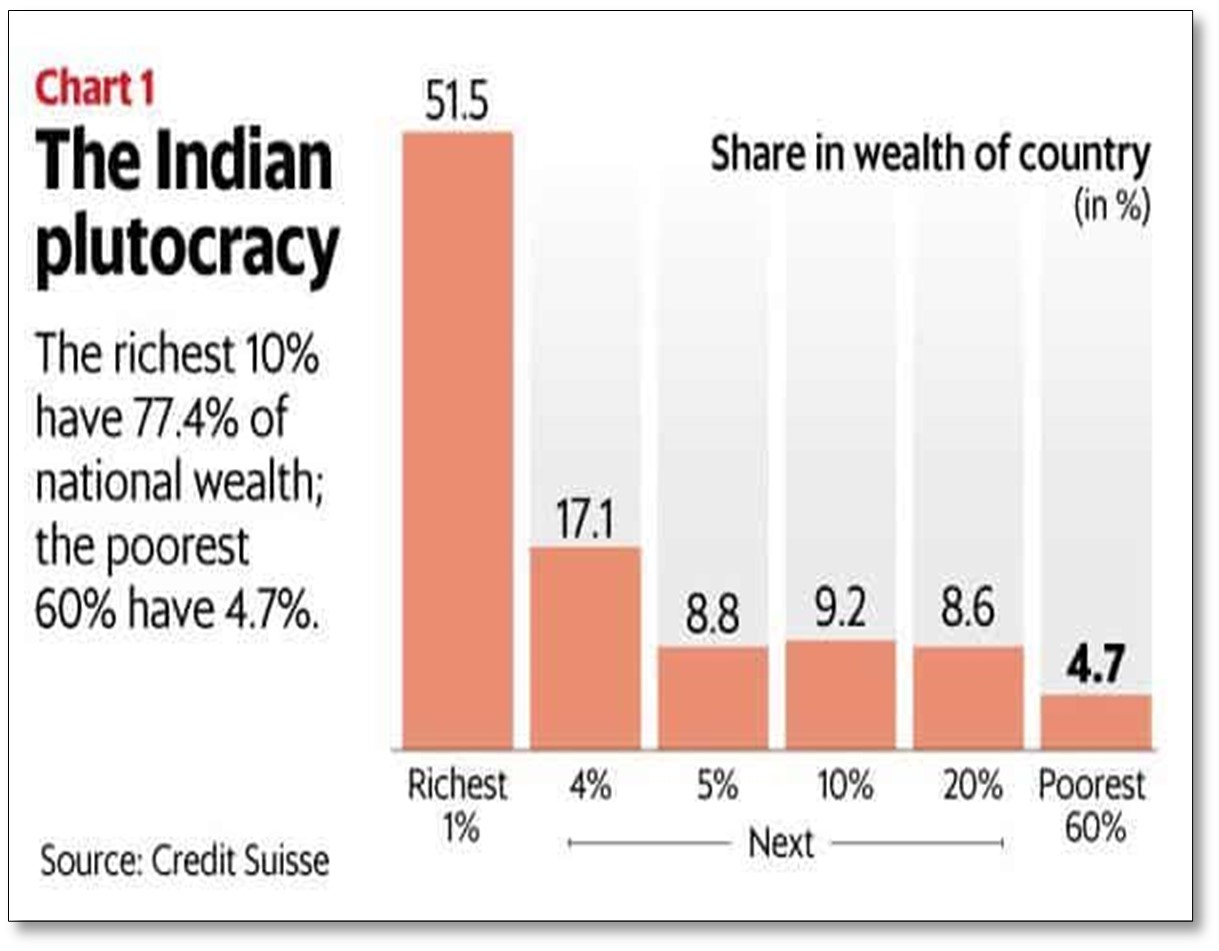
About the Survey
- Aim: The main objective of the survey on Debt & Investment was to collect basic quantitative information on the assets and liabilities of the households as on 30.6.2018.
- Expenditure Heads: The survey gathered information on the amount of capital expenditure incurred by the households during the Agricultural Year 2018-19 (July-June), under different heads, like residential buildings, farm business and non-farm business.
- Indicators
- Average value of Assets (AVA):This includes the average value of all the physical (land, building, livestock, vehicles) and financial assets (shares in companies, deposits in post offices etc.) banks owned per household.
- Incidence of Indebtedness (IOI):The percentage of the indebted households.
- Average amount of Debt (AOD):It is average amount of cash dues per household.
- Average Fixed Capital Expenditure by the households.
Sources:
Unorganized Sector
In News
The government has recently launched e-Shram portal, a database of unorganized sector workers.
About the e-Shram portal
- e-Shram card: The government aims to register 38 crore unorganized workers, who will be issued an e-Shram card containing a 12-digit unique number.
- Registration: A worker can register on the portal using his/her Aadhaar card number and bank account details, apart from filling in other necessary details like date of birth, home town, mobile number and social category.
- Significance: It would also be helpful in delivering various social security schemes being implemented by the Central and State Governments.
What does unorganized sector mean?
- Definition: Unorganized sector consists of all unincorporated private enterprises owned by individuals or households engaged in the sale and production of goods and services operated on a proprietary or partnership basis and with less than ten total workers.
- There can be informal work in the organized, formal sector and formal work in the unorganized, informal sector as well.
- The terms unorganized and informal sector are used inter changeably in the India context.

- Contribution of Unorganized sector
- GDP: ‘Unorganised’ economy now accounts for roughly half of India’s GDP.
- Workforce: India’s workforce accounts for approximately 92% of the unorganized group, with the entire farm sector falling under the informal category.
What are the Problems faced by the unorganized sector?
- Exploitation of labour force
- Poor regulatory oversight: Since unorganized firms operate outside of the jurisdiction of corporate law, workers neither have job-security nor social protection. This leads to long working hours, lack of sanitary facilities or health insurance.
- Lack of bargaining power: Poor human capital base (in terms of education, skill and training) as well as lower mobilization status of the work force weakens the bargaining strength of workers.
- Lack of career progression: The expendable nature of the unorganized labour force causes wages to remain at minimal levels, but the prices of products and services produced by these workers usually do not rise in sync with the rate of inflation, further adding to their despair. So, workers are unable to improve their work-expertise in such a paradigm, are deprived of career growth opportunities
- Lack of job security: The sector is characterized by excessive seasonality of employment (especially in the farm sector), preponderance of casual and contractual employment, atypical production organizations and work relations, absence of social security measures and welfare legislations, worker rights, denial of minimum wages and so on. All these factors add to job insecurity.
- Discrimination: In rural areas, the unorganized labour force is highly stratified on caste and community considerations. In urban areas, although less but not altogether absent, as the bulk of the unorganized workers in urban areas are basically migrant workers from rural areas.
- High unorganized sector means the poorest sections of the population are not benefiting from the country’s GDP growth by virtue of being excluded from the organized production process.
- Poor productivity: Primitive production technologies and feudal production relations are rampant in the unorganized sector. These factors do not permit or encourage the workmen to imbibe and assimilate higher technologies and better production relations.
- Low tax base and consequent poor tax to GDP Ratio: Large unorganized sector has led to reduced ability of India to tax its economy, reducing government’s ability to fund infrastructure investment and spend on welfare measures.
- COVID 19 exposed vulnerability: According to Oxfam’s report, out of the total 122 million who lost their jobs in 2020, 75 per cent, which translates to 92 million jobs, were lost in the informal sector.
Despite the Vulnerabilities of this sector, why does the unorganized sector persist in India?
- Demand for labour: Surplus workers have, over time, migrated away from agriculture in search of non-agricultural work. Due to lack of formal sector jobs, they were absorbed in unorganized manufacturing in micro-enterprises.
- Incentive to remain small: Low competitiveness, arduous compliance norms as well as skill and capital deficits, among others, keep MSMEs disincentivizes the MSMEs to grow. There are hardly any labour laws were applicable to the small enterprises.
- The quality of labour supply:
- Literacy and Skills: Out of India’s total workforce, around 31% were illiterate, only 13% had a primary education, and only 6% were college graduates. Further, only about 2% of the workforce had formal vocational training, and only 9% had non-formal, vocational training. Most illiterate and unskilled workers are either casual workers or in self-employment.
- Vicious cycle: Skilled labour and technology are complementary, but unskilled labour and technology are substitutes. This, in turn, leads to still fewer formal jobs
- Stagnant manufacturing sector: The relative importance of Manufacturing, which contributed 16 per cent of GDP in 1990-91, has not risen at all till recently. Also, Globalization and increased global competition has led to informalisation of industrial labour as manufacturers seeks to improve their competitiveness by paying lower wages to informal workers.
Conclusion: Participation in organized production is the first step towards a stable livelihood for the poor. It is the government’s responsibility to take initiative and create adequate roles for them within the main economy. The Social Security Code, once in place, will merge Unorganized Workers’ Social Security Act 2008 along with the seven other labor laws.
However, issues like unstated conceptual distinction between self-employed and gig workers, dual authority for an individual unorganized worker, lack of inter-state arrangements on ‘constantly on-move’ unorganized sector workers, threat of exclusion from social security benefits because of failing to update information online etc. remains.
Question: Discuss the concerns related to the unorganized sector. What are the steps taken by the government to address these concerns?

Sources:
- e-Shram portal: A database for unorganised sector workers
- Informal Sector /Unorganised sector
- Employment Policy Department
- Informal economy in South Asia
- 92% of jobs created over 22 years post-liberalisation were informal
- Labour codes need to be drafted keeping in mind realities of informal sector workers
- Rework social security code for informal workers
- Labour reforms: No one knows the size of India's informal workforce, not even the govt
This Day in History - World Ozone Day
On September 16, 1987, the United Nations and 45 other countries signed the Montreal Protocol, on substances that deplete the Ozone layer. Every year, this day is celebrated as the International Day for the Preservation of the Ozone layer. It is celebrated to spread awareness among people about the depletion of the Ozone Layer and search for possible solutions to preserve it. The Ozone layer, also known as the Ozone shield, is a delicate layer of gas in the Earth’s stratosphere that absorbs most of the Sun’s ultraviolet rays, which is harmful to human life and other life forms. The first ozone hole was discovered 30 years ago in May 1985 over Antarctica.

Source:
Image of the Day - Gatka
This is image of armymen showing off their skills during a Gatka performance at an event to mark Swarnim Vijay Varsh celebrations in Dharamshala. The year 2021 marks the 50th anniversary of victory of the Indian Armed Forces in the 1971 war and the year is being observed as ‘Swarnim Vijay Varsh’ in honour of the Indian Soldiers who laid down their lives in the line of duty. After the fifth guru, Guru Arjan Dev, was killed by the Mughals, Guru Hargobind, his son, propagated the idea of learning Gatka to fight oppression. The moves keep a person physically agile, courageous, and sharp, but also mentally alert to respond quickly.

Source:
National Asset Reconstruction Company
- Context: Government guarantee to be provided to security receipts issued by the National Asset Reconstruction Company (NARCL).
- National Asset Reconstruction Company Ltd (NARCL) is the name coined for thebad bank announced in the 2021-22 Budget. It is regarded as the mother of all Asset Reconstruction Companies (ARCs).
- Bad bank refers to a financial institution that buys the NPAs or bad assets from banks and other financial institutions so that the latter can clean up their balance sheets.
- NARCL is being created in collaboration with both public and private sector banks.
- NARCL will pay up to 15 per cent of the agreed value for the loans in cash and the remaining 85 per cent would be government-guaranteed security
- ARCs are set up under the Securitization and Reconstruction of Financial Assets and Enforcement of Security Interest (SARFAESI) Act, 2002.
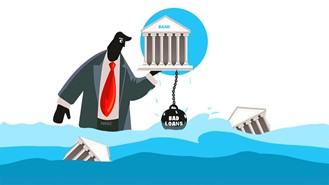
Sources:
Tarballs
- Context: The Municipal Corporation of Mumbai has removed over 20,000 kg of tarballs from Juhu and Versova beaches.
- Tarballs are dark-coloured, sticky balls of oil formed when crude oil floats on the ocean surface.
- The oil comes from the large cargo ships in the deep sea which after being subject to various physical, chemical and biological processes (weathering), is transported to the shore by sea currents and waves.
- It gets pushed to the shore as tarballs during monsoon due to wind speed and direction.
- Tarballs are usually coin-sized. However, over the years, they have become as big as basketballs and can weigh as much as 6-7 kgs.

Source:
Image Source:
Project Udaan
- Context: IIT Bombay has launched Project Udaan.
- ‘Project Udaan,’ is an AI based end-to-end translation software ecosystem, which translates scientific and technical content from English to Hindi and all other Indian languages.
- It can translate engineering textbooks, learning materials in one-sixth of the time taken by a team of domain and linguistic experts working manually on it.
- The project is in line with the New Education Policy, which promotes imparting of higher education through Indian languages.

Sources:
Adjusted Gross Revenue (AGR)
- Context: The Government has given a 4 year moratorium on AGR dues.
- The AGR is divided into spectrum usage charges and licensing fees, pegged between 3-5 % and 8 % respectively and is charged by the Department of Telecommunications (DoT).
- As per DoT, the charges are calculated based on all revenues earned by a telecom operator including non-telecom related sources such as deposit interests and asset sales.
- Telcos insist that AGR should comprise only the revenues generated from core telecom services and not dividend, interest income or profit on the sale of any investment or fixed assets.

Sources:
Real democratic freedom is impossible without economic equality- IE
Essence: India is a democratic nation but without economic freedom, inequality becomes the very base of India’s culture sheltering injustice, regional and sectoral imbalances etc. The editorial talks about the very basis of power structure in India and how it becomes a problem against an ideal setup. Economic democracy is the real democracy which should be ensured through economic packages of the government. The underclass is not just wage workers/passive recipients of welfare benefits, but as potential producers. Govt could very well utilize MGNREGA to build a democracy of “freely associated producers”.
Why should you read this article?
- To understand the meaning of democracy and how it is disappearing in India.
- To understand why economic democracy is the real democracy and what should be done to ensure the same.
Source:
There finally seems to be a path forward for GST. Centre and states must strike bargain- IE
Essence: The authors of the article feel that due to improvement in GST collections in recent months, it is time for the Centre and the States to put behind its differences and focus on future of GST. The reasons for the shortfall of GST collections are decrease in effective tax rate and fall in nominal GDP growth rate and not due to the concept of GST. This situation has now improved, and we can now focus on the future of GST by incorporating the learnings. First, recast the concept of compensation by creating a revenue buffer which can be used when there is a drop in revenues. Second, simply tax structure by adopting three tax slabs and removing cesses on demerit goods. Finally, improve the governance of GST Council by offering Vice-Chair and the opportunity to set the agenda of the council meetings to the opposition ruled states.
Why you should read this article?
- To understand the trends in the GST collection and the reasons for such a trend since its inception in July 2017.
- To know about the measures needed to strengthen the functioning of the GST.
Source:
For climate finance, create a level playing field- HT
Essence: The United States climate envoy John Kerry’s recent visit India has again put the limelight on Climate issues and the pressure the developed world is creating on India to commit to Net Zero Emission by 2050 at the India-US Climate Action and Finance Mobilising Dialogue. USA sees economic opportunities in India due to India’s goal of achieving 450 GW of renewables by 2030. The developing countries are being nudged to come on board net-zero by 2050 but the Financing of $100 billion a year as promised in Copenhagen Accord remains in limbo.
The possibility of excluding bigger economies of G-20 from climate financing but having to pitch for market funding is a reason to worry for India. Clarity on which activities and investments and the capital availability would be deemed green would be useful, if not imperative for developing countries. Green Technologies have higher capital costs, and unproven operational efficiency creating financial hurdles for developing countries. Attention needs to be paid to the fact that even if emissions fall to zero, the temperature will keep rising hence adaptation to the warming effects is needed. Given the scale of climate finance requirements, the collaboration of the developed world would have to go beyond $100 billion a year pledged more than a decade ago.
Why you should read this article?
- The article talks about the Net-Zero compliance by 2050 by developing countries and related finance issues.
- The article highlights the need for strong capital availability for Climate-related efforts.
Source:
Value: Perseverance, Dedication and Public Service
About
- Meme Chonjor is a resident of Stongde village of Ladakh.
- The retired government employee single-handedly constructed a 38 km road in Zanskar Valley region.
Challenges faced by Meme Chonjor
- Finances: Spent all his savings and sold off the ancestral property for road construction.
- Geographical constraints: Short working season and high altitude did not provide a friendly working condition.
Success
- Connectivity: Road provide important access to the local community, tourism and business.
- Strategic implication: The completion of the road aided a stronger presence of Indian defence forces in the border sensitive Ladakh region.
Things to learn
Volunteerism, philanthropic attitude, empowerment, resilience, grit, perseverance, and dedication.
Quote
“Strength does not come from physical capacity, strength comes from indomitable will”.
Where can it be used
Paper 4: Social Influence and Persuasion, Empathy, Compassion
Source:
Share the article
Get Latest Updates on Offers, Event dates, and free Mentorship sessions.

Get in touch with our Expert Academic Counsellors 👋
FAQs
UPSC Daily Current Affairs focuses on learning current events on a daily basis. An aspirant needs to study regular and updated information about current events, news, and relevant topics that are important for UPSC aspirants. It covers national and international affairs, government policies, socio-economic issues, science and technology advancements, and more.
UPSC Daily Current Affairs provides aspirants with a concise and comprehensive overview of the latest happenings and developments across various fields. It helps aspirants stay updated with current affairs and provides them with valuable insights and analysis, which are essential for answering questions in the UPSC examinations. It enhances their knowledge, analytical skills, and ability to connect current affairs with the UPSC syllabus.
UPSC Daily Current Affairs covers a wide range of topics, including politics, economics, science and technology, environment, social issues, governance, international relations, and more. It offers news summaries, in-depth analyses, editorials, opinion pieces, and relevant study materials. It also provides practice questions and quizzes to help aspirants test their understanding of current affairs.
Edukemy's UPSC Daily Current Affairs can be accessed through:
- UPSC Daily Current Affairs can be accessed through Current Affairs tab at the top of the Main Page of Edukemy.
- Edukemy Mobile app: The Daily Current Affairs can also be access through Edukemy Mobile App.
- Social media: Follow Edukemy’s official social media accounts or pages that provide UPSC Daily Current Affairs updates, including Facebook, Twitter, or Telegram channels.

